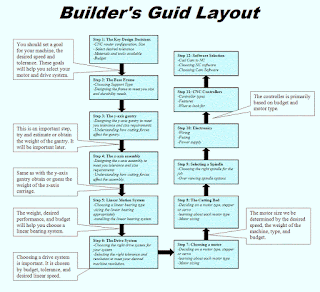 |
| cnc machine rely |
Even CNC machines rely on hard tooling to accurately position and hold parts like this freshly carved neck.
Those of you foolish enough to have read my previous writings know how much i adore guitars and the bric-a-brac that goes along with them. since one of my favorite things about building is the design and execution of hard tooling, I've also subjected you to my pontificate on tools that are used to make instruments. without these nifty little (and not-little) items your guitar might never have been bore. In fact, Most every part of the Process relies upon tooling of some kind.
As essential and ubiquitous as it is, hard tooling is one mysterious aspect of guitar making that doesn't get much screen time. its younger sibling, CAD/CAM (computer- aided design and computer-aided manufacturing) hogs most of the publicity nowadays, probably because of its digital status. but it's interesting to note that even cnc machinery-the automated equipment that runs on CAD and CAM programs-can't function without hard-tooling design.
tooling, which includes fixture and Jigs, are devices that hold or move parts as they are being machined. It can be merely to clamp a single part, or it can hold many- as in the case of a CNC machine. Tooling can bee stationary while cutters, sanders, or drills move into or over the part being done. Some tools have multiple stages and re position for a series of steps. parts can be indexed (located) manually or via mechanical means. tooling can be as simple as a block of wood clamped to a saw's fence, While other fixtures and jigs can be complicated and even programmable to set up multiple operations in succession.
When we used hand tools like chisels, the parts being worded are usually held in a vise or clamped to a workbench with "dogs" that keep the piece steady. This allows the control of the cut to be determined by the worker's hands and prevents the part from skating away. if you've ever tried to saw a small piece that wasn't held down, you know how difficult that can be. In a way, the bench dog and the vise are the first and most primitive kinds of hard tooling.
When I Visit a workshop or factory of any kind, I admire the tooling more than the items that are being made with them.
In the modern incarnation, CNC machining can use pneumatic-cylinder clamps or a vacuum device for clamping power. These fixtures hold the work in the same place each time so the machine can repeat its work blindly. Eventually, computer-milling stations will see the work and be able to adjust their movements accordingly—just like a human worker might. But for now, most fixture is analogous to T-ball, where one item is held in place and the machine swings the bat.
The mobile type of tooling is one of my favorites. This includes forms that determine the shape of a part to be cut. It can be done by making an outline template that’s affixed to the raw part, and then running the raw part against a router or sharper. Or conversely, a hand router can be moved around the template. A rub bearing or locating pin feels along the edge of the template while the router bit cuts the part to shape accordingly. The part can be located by eye using alignment marks, or with pins that fit into holes in the part. (If you look closely at some early Fender guitar bodies, you can see the small, filled-in locating holes.)
I’ve made dozens of these tools over the years from plywood, phenolic composite, and aluminum. For prototyping purposes, you can even use double-sided tape to hold a part on the form!
One of the most challenging things about devising excellent tooling is building adjustments right into them. I’ve watched entire systems—built on the premise of accuracy—come crashing down when the final parts don’t fit each other. When dealing with wood, things change. If you don’t build tooling that allows for variable materials, each tool will compound the inaccuracies of the ones that came before. And this can leave you with a lot of scrap reports to fill out.
A well-designed and flexible piece of tooling is a beautiful thing to see. When I visit a workshop or factory of any kind, I admire the tooling more than the items that are being made with them. Almost anyone can imagine and draw a guitar form, and lots of people can hack out an instrument. A good engineer can devise a system of tools that looks good on paper, but fails in the real world. In my estimation, it’s a clever crafts person that dreams up and builds fine tooling that works.
Page Source: http://goo.gl/oK6LfS
website :www.subauae.com
Post By: Irfan Khan

























